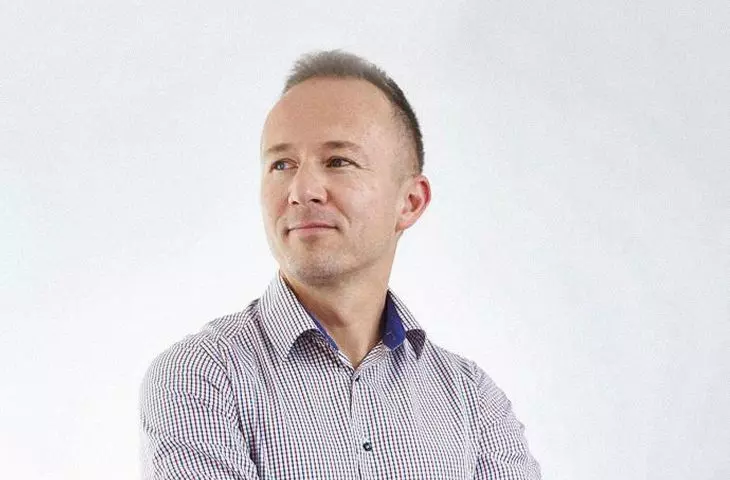The end of December - because that's when we finished preparing the January issue - is the best time for all kinds of summaries. And like every year, we ask practitioners and architecture critics to write what they consider a success and what they consider a failure in a given year. We do it in the convention of Sink or Soar. We give our Authors total freedom of expression and do not moderate this discussion. Rather, we are very curious about it.
Previous episodes of the series featured:
- Oskar Grąbczewski - architect, OvO Grąbczewscy Architekci studio
- Filip Springer - reporter and photographer
- Hubert Wąsek - president of SARP Częstochowa Branch
- Maciej Franta - architect, founder of Franta Group Architects studio
- Marta Sekulska-Wronska - architect and partner at WXCA studio, president of OW SARP
- Tomasz Malkowski - architecture critic
- Małgorzata Kuciewicz and Simone De Iacobis - Centrala Group
- Wojciech Januszczyk - landscape architect and founder of the Landscapes Foundation
- Marek Kaszyński - president of SARP Krakow Branch
- Monika Arczyńska - architect (A2P2)
- Jakub Szczęsny - architect (SZCZ)
- Joanna Erbel - urban activist, housing expert
- Piotr Chuchacz - MPOIA's examiner
- Barbara Nawrocka and Dominika Wilczynska - architects (Miastopracownia)
- Robert Konieczny - architect (KWK Promes)
Kuba Glaz in Sink or Soar 2022 of A&B 01|2023 issue.
In the past year in both categories, I don't see any candidates for the grand prix, especially since some of the hits and kits were already featured in previous years. However, this does not mean that they are not worth mentioning now as well. Unfortunately, the kits are much more spectacular.
SINK
First on the list is the decision to build from scratch the so-called Saski Palace (or, in fact, Skwarcow's rental house). The issue, instead of quieting down in the face of the crisis and geopolitical situation, has gained momentum and is an illustration of the thoughtlessness typical of many domestic ventures. As usual, there is no answer to the simple but fundamental question "what for?" To rebuild a palace without determining what function it is to serve is the greatest sin. Not to announce a competition for the concept of creative development of the space after the palace - a missed opportunity. To hold a competition to design something that existed and was mediocre - stupidity. To spend, so far, more than 5 million zlotys (salaries for employees of the Saski Palace Company, November figures) - is to spit in the face of an impoverished society. To realize historical-independence fantasies with the help of an object rebuilt by the partitioner - this is already grotesque.
The production of patriotic benches, as pointless and ugly as they were expensive, was also a ghastly cabaret. When the paint came off from a bench in Poznan (as it later turned out - an arbitrary construction project) after one rain, a reflection arose: what if the Saski was of similar quality? A legitimate fear, when one recalls that the concrete in the Vistula Spit diversion (the canal, by the way, is another putty) began to crumble a few days after the ribbon cutting.
Finally, let the palace and bench fireworks not obscure the still tragic housing issue. In 2022, the production of mediocre housing, non-functional apartments, and estates located in nonsensical places has not waned. Even if the pace of pat-development is slowing down, there is no increase in quality at all. Add to this the prices and housing hunger among young adults, and we have pretty good material for social unrest or revolution. The more pissed off are probably already preparing Molotov cocktails in their micro-apartments (yes, the ones designed by you, ladies architects and gentlemen architects).
SOAR
First, a real hit - from the world. Joy and benefit come from this year's Pritzker Prize for Francis Kéré. This Burkina Faso-based architect shows how to design modestly, responsibly and, mostly, with what's at hand. However, there is no question of sub-standard. Kéré cares about both form and function. No starchitecture, no fireworks. Honest work based on a way of thinking that, once adapted to local conditions, is worth introducing more widely. In light of climate change, resource depletion and unfolding geopolitical and financial crises, we need many more designers like Francis Kéré.
And what about on the Polish ground? Above all, it is gratifying to see the popandemic return of the public to live-led educational and popularization activities - from festivals, walks, guided tours, workshops, to meetings with authors of many good new books on both the history of architecture and cities (m.Grzegorz Piątek, Kinga Nettmann-Multanowska, among others), as well as the current and future condition of design (Agata Twardoch and Joanna Erbel, among others). Let's add appreciation to those local SARPs that - despite modest finances - continue thematic series and festivals, as well as to all initiatives and organizations that still want to influence the level of space and architecture and spread knowledge about it in society.
Very cautiously, the year-long work on a major revision of the planning system can be considered a hit. Cautiously, because in the autumn the project was ripped out a significant fang in the form of timely vuzetas, and besides - we won't find out about the real content and quality of the new regulations until 2023.
Jakub Głaz
architecture critic, columnist, editor of A&B














